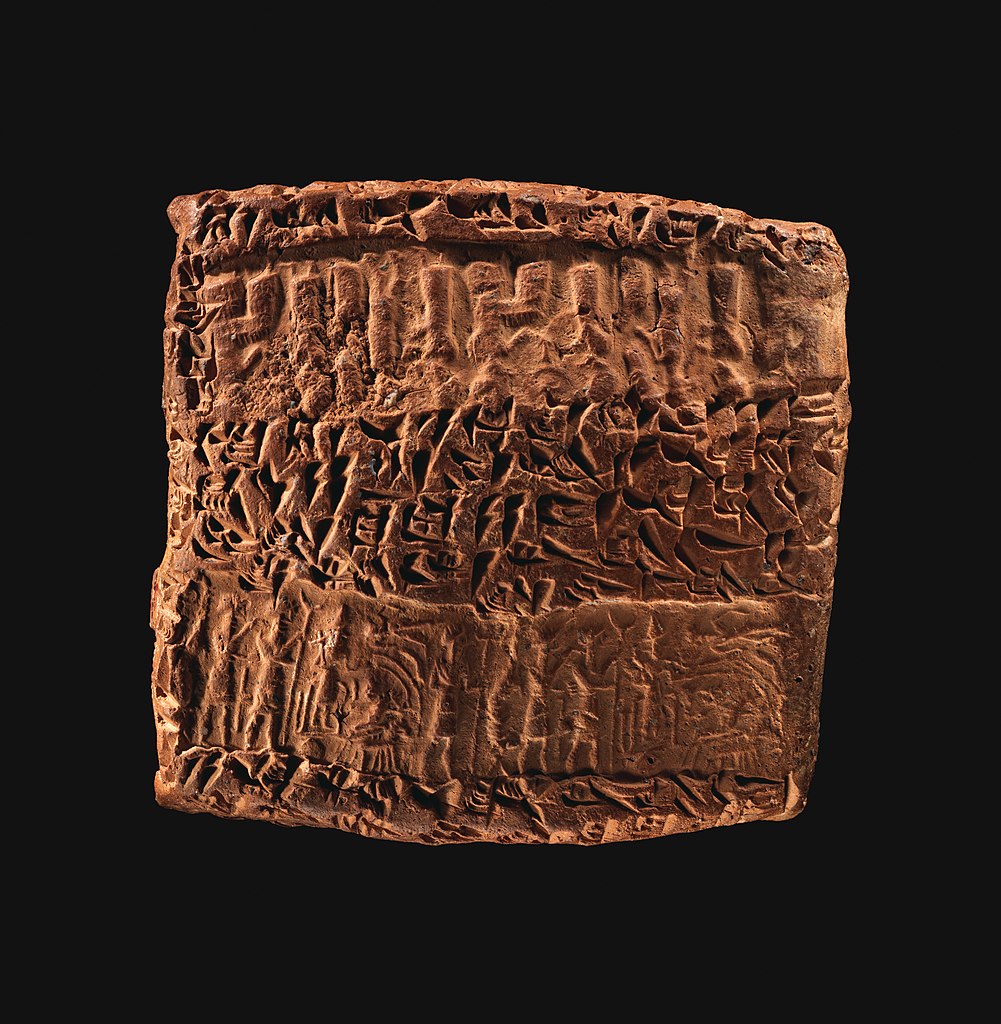In regards to a possible threat to Earth, ancient cuneiform tablets prove historically accurate
Some 3,000 years ago, astrologers working for the king of the Assyrian empire kept a close eye on the skies, and what they found and recorded on cuneiform tablets can give us incredibly valuable insights into things such as solar flares and other cosmological happenings that are just as relevant today as they were when first recorded.

Ancient Origins notes that approximately 2,700 years ago, astrologers observed something that caught their eye, and they recorded the event on stone tablets:
“(The astrologers) wrote about an unusual red glow in the sky. A University of Tsukuba team found that there are at least three ancient cuneiform tablets that mention such an event, sometimes described as a ‘red cloud’ or with text saying ‘red covers the sky.’”
According to Science Daily, those observations were compared against carbon-14 concentrations in tree rings from that same time period, and what they found is nothing short of incredible:
“These were probably manifestations of what we call today stable auroral red arcs, consisting of light emitted by electrons in atmospheric oxygen atoms after being excited by intense magnetic fields. While we usually think of aurorae as confined to northern latitudes, during periods of strong magnetic activity, as with a solar mass ejection, they may be observed much further south. Moreover, because of changes in the Earth’s magnetic field over time, the Middle East was closer to the geomagnetic pole during this period in history.”

A Helping Hand From the Ancient Assyrians
It turns out that the Assyrians may be able to lend a helping hand to modern-day scientists who are also studying the sun.
Researchers writing in the Astrophysical Letters Journal explain that solar events are an even bigger threat now than they were thousands of years ago:
“These space weather events constitute a significant threat to a modern civilization, because of its increasing dependency on an electronic infrastructure.”
Think about it: A massive solar flare such as the one described by the Assyrians could negatively impact cell phone towers and internet connections. We already know that satellites and spacecraft are highly vulnerable to such happenings. How long could our modern, interconnected world last without the telecommunications devices we all rely on?
In a sense, we can learn a great deal from the Assyrians, and that knowledge may allow us to prepare for future solar events:
“From a historical point of view, it’s interesting because these cuneiform tablets are believed to be the earliest records of this kind of solar events, pushing information back on that phenomena by at least a century. So, the ancient Assyrian astrologers who wrote the texts have provided another example of how learning about the past can help enhance the present, and sometimes even ‘predict’ the future.”
Other Celestial Events
Ancient astrologers did more than just watch the sun and its effects on Earth. They also tracked comets, meteors, and planetary movements, or other celestial events that might portend good or bad omens for their societies.
The job of being an astrologer was very serious and highly respected, Sarah Roberts writes:
“When reading these signs, the priests were primarily concerned with what was happening in the state as a whole and in the life of the king as the central figure of the state. They also believed that they could undertake rituals to appease the gods and mitigate any negative warnings revealed by the stars.”

The Path to Scientific Exploration
It may sound ridiculous to suggest that astrology led the way to scientific knowledge, but in many ways that just so happens to be exactly what transpired with the work of the ancient Assyrian astrologers:
“Babylonian astronomers had developed an empirical approach to predicting planetary movement by the 8th century BC. Their studies were later adopted and developed by the ancient Greeks and included some good illustrations of ancient Babylonians using advanced mathematical methods. For example, they used calculus to track Jupiter – a key planet in their minds due to the link they created between Jupiter and their key god, Marduk.”
Man has been contemplating his place in the universe for centuries, and eventually, our interest in the stars led to the space program which has taken us to places in our solar system which were once little more than a dream. Our ancient forefathers laid the path for what would later come to pass, and we owe them a debt of gratitude for taking the time to record what they saw as they too stared into the night sky.





